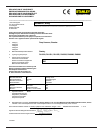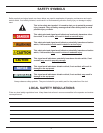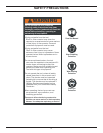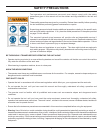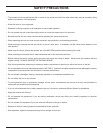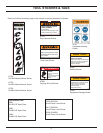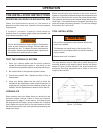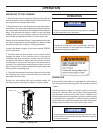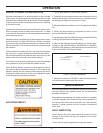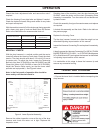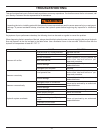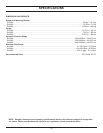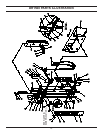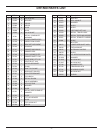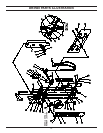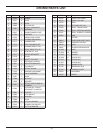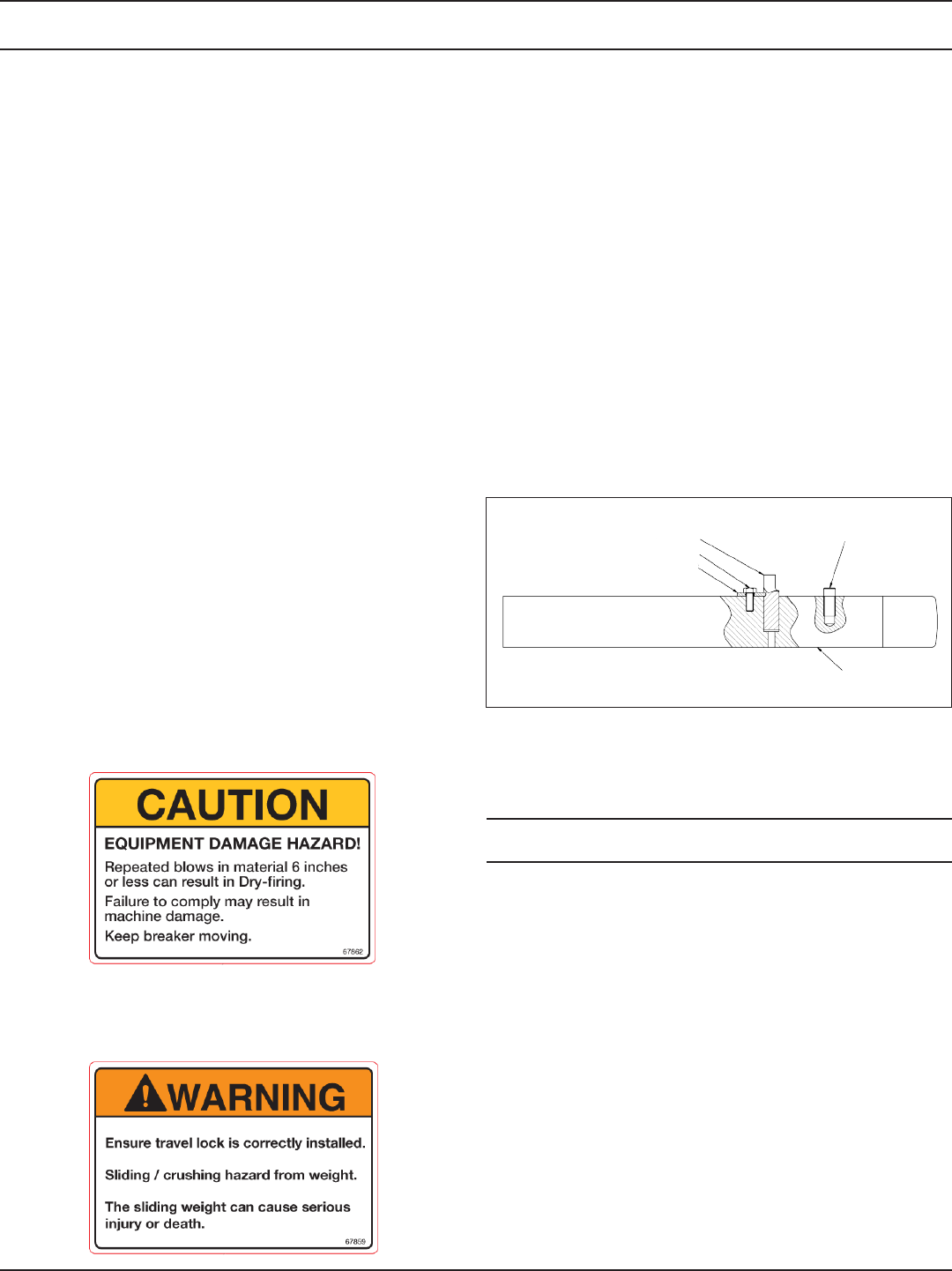
12
1. Tip the drop hammer to a horizontal position.
2. Gradually move the drop hammer past horizontal until the
weight slides forward. This can be done in a controlled manner
by shaking the weight out using the curl lever.
3. Allow the Hammer to slide out until it hits against the Safety
Pin.
4. Return the drop hammer to horizontal and rest it on the
ground and Shut the carrier off.
5. On the under-side of the Hammer remove the Bolt and Peg
Locking Plate that hold the Hammer Peg.
6. Remove the Hammer Peg and replace it in the next hole.
Tighten to 180 ft/lbs/240 Nm for the DH3500 and DH9000,
for the DH1500 tighten to 140 ft lbs/190 Nm with the Bolt and
Peg Locking Plate. See Figure 3 below.
Figure 3. Hammer Adjustment
7. Restart the carrier and SLOWLY raise the drop hammer
until the Hammer slides down the column.
MAINTENANCE
It is recommended that only genuine Stanley parts are used.
Genuine Stanley drop hammer parts are all checked for
allowable tolerances.
Although the drop hammer is a simple machine, it is subject
to severe stresses and shocks during normal operation. A
ve-minute daily check will ensure that your drop hammer
remains in good condition and will prevent unscheduled
down time.
DAILY INSPECTION
Check that all the mount plate bolts that connect the drop
hammer to the carrier are tight and torqued to the recom-
mended value.
Check that the motor ange bolts are tight and secure.
GENERAL TECHNIQUE FOR BREAKING SLAB
Rest the drop hammer in a vertical position on the concrete
to be broken. The skids should be just resting on the concrete
with some of the weight taken by the carrier. If a crack appears
in the top surface of the concrete you can be sure it is broken
all the way through.
Actuate the hydraulics and the drop hammer will start to cycle.
As the concrete cracks or breaks move the carrier. It is best
to move while the hammer is raised and pause momentarily
as the hammer strikes.
Generally all that is required is to hit the concrete until it cracks
and then move 6-12 inches /150-300 mm. Sitting in one place
will pulverize the concrete and eventually the hammer will hit
the column buffers. This is felt as a hard jarring action through
the machine.
With skid steers movement can be in any direction but gener-
ally moving in a reverse direction provides the best control.
On excavators setting the machine down and moving in arc
with the slew drive is usually the quickest method.
It is important to keep the drop hammer as vertical as possible
during operation as this provides the greatest impact.
When breaking thinner concrete, the drop hammer may hit
too hard and punch completely through. In this instance the
hammer sticking into the concrete and stopping the carrier
traveling can slow production. If this occurs adjust the impact
of the drop hammer as described below.
ADJUSTING IMPACT
OPERATION
Hammer Peg
Hex Head Setscrew
Peg Locking Plate
Hammer Safety Pin
Hammer



